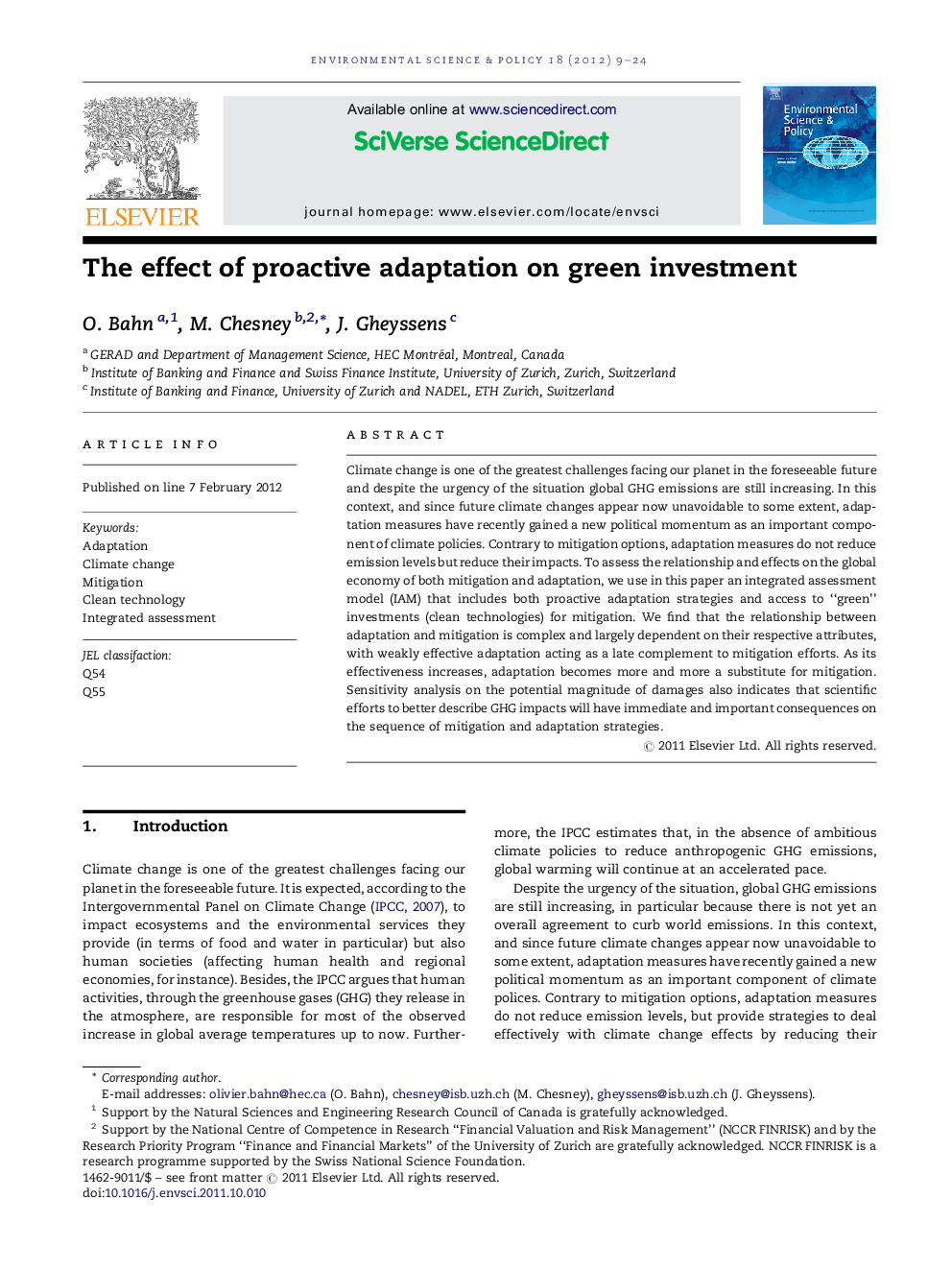| Article ID | Journal | Published Year | Pages | File Type |
|---|---|---|---|---|
| 1053764 | Environmental Science & Policy | 2012 | 16 Pages |
Climate change is one of the greatest challenges facing our planet in the foreseeable future and despite the urgency of the situation global GHG emissions are still increasing. In this context, and since future climate changes appear now unavoidable to some extent, adaptation measures have recently gained a new political momentum as an important component of climate policies. Contrary to mitigation options, adaptation measures do not reduce emission levels but reduce their impacts. To assess the relationship and effects on the global economy of both mitigation and adaptation, we use in this paper an integrated assessment model (IAM) that includes both proactive adaptation strategies and access to “green” investments (clean technologies) for mitigation. We find that the relationship between adaptation and mitigation is complex and largely dependent on their respective attributes, with weakly effective adaptation acting as a late complement to mitigation efforts. As its effectiveness increases, adaptation becomes more and more a substitute for mitigation. Sensitivity analysis on the potential magnitude of damages also indicates that scientific efforts to better describe GHG impacts will have immediate and important consequences on the sequence of mitigation and adaptation strategies.
► We develop an integrated assessment model (IAM) that includes both proactive adaptation strategies and access to “green” investments (clean technologies) for mitigation. ► Adaptation, when weakly effective, is used as acomplement to mitigation strategies. ► In this setting, it is optimal to start adapting before mitigating. ► Highly effective adaptation acts as a medium- to long-term substitute to mitigation efforts.
